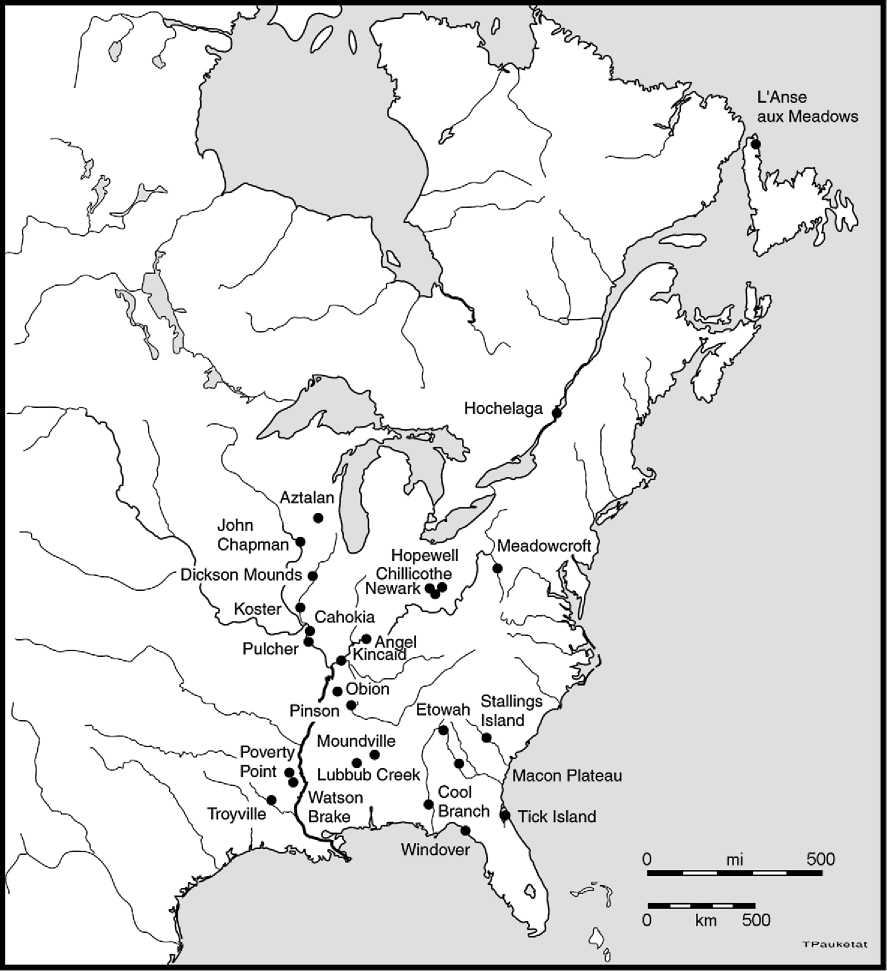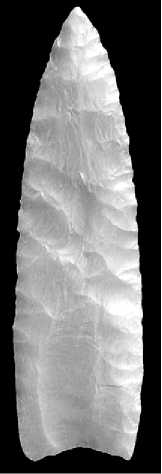Of course, the emplacement of Europeans in North America was not the first colonization of the continent. The first Americans were probably a disparate lot of immigrants arriving during the Ice Age (or Pleistocene epoch) in the eastern Woodlands by way of western North America. Before that, most believe, the original immigrants had arrived in boats from Asia. An ancient European Palaeolithic origin for some of them remains a possibility, in part because one of the earliest ‘Palaeo-Indian’ settlements in North America is in Virginia.
Actually, various archaeologists now believe that these earliest human colonists arrived before the Palaeo-Indian period, more than 16 000 years ago; their remains were found deeply buried in places such as Meadowcroft Rockshelter in western Pennsylvania (and other New World sites; see Figure 1). Because they were first, they were few in number and their sparse populations make their remains, for all archaeological intents and purposes, virtually invisible. If correct, then the Palaeo-Indians, those people who made the well-known ‘Clovis’ projectile points at c. 10 200-10 000 years BP, were not the first Americans (Figure 2). Instead, Clovis culture represents ‘the beginning of the archaeological visible portion’ of the ‘peopling’ of eastern North America.
In the eastern Woodlands, their readily identifiable ‘fluted’ projectile points (specially thinned at their bases for hafting) come in a variety of sizes and have been found in direct or suggestive association with the remains of caribou, elk, bison, and mastodon, among other extinct animals from sites as distant as the sinkholes of Florida to the glacial fronts in New York, Ontario, and southern Michigan. Whether the Pleistocene megafauna were driven extinct by the Palaeo-Indians remains an open question, but there is regional settlement evidence that these hunter-gatherers did not merely radiate across a virgin landscape, killing megafauna as they went. Instead, the

Figure 1 Select archaeological sites in eastern North America.
Palaeo-Indians ranged hundreds of kilometers within identifiable territories. Some ‘bands’, for instance, traveled annually between base camps and outlying ‘retooling’ sites - places where they made new chipped-stone bifaces - in Illinois and Indiana or Ohio, Michigan, and southern Ontario.
While archaeologists will continue to debate the peopling of the continent until incontrovertible evidence is found, they have paid less attention to an equally significant research question highly relevant to today’s warming world: the relationship of the late Palaeo-Indian people to the beginning of the warmer Holocene (at c. 9000 BC), with its rising sea levels and disappearing megafauna. Inland, there are various regional manifestations of the Late Palaeo or earliest Early Archaic peoples, one of which is the midcontinental Dalton culture. Large Dalton period base camps probably sported a series of surface dwellings that housed a number of families. In Arkansas, archaeologists observe that the Dalton people abutted their Plains ‘Plano-period’ contemporaries who made fluted Folsom points.
Unlike their Clovis culture precursors, the Dalton people and other Early Archaic folks ranged far less widely. In addition, for the first time, the ancient people made and used numerous groundstone and

Figure 2 Clovis point (length c. 10 cm).
Woodworking tools, notably including Dalton adzes, probably indicating the increased reliance on local plant foods and the construction of dugout canoes, respectively. There were also formal cemeteries, although the best-known Early Archaic cemeteries are not in Arkansas. They are in coastal Florida, where bodies were staked to the bottom of ‘charnel ponds’ or bogs of the drowned seacoast. Buried with the dead at sites such as Windover were items of clothing, atl-atls (spearthrowers), beads, engraved bird-bone tubes, and other bone tools, projectile points, and assorted wooden objects.




 World History
World History




![The Battle of Britain [History of the Second World War 9]](/uploads/posts/2015-05/1432582012_1425485761_part-9.jpeg)




